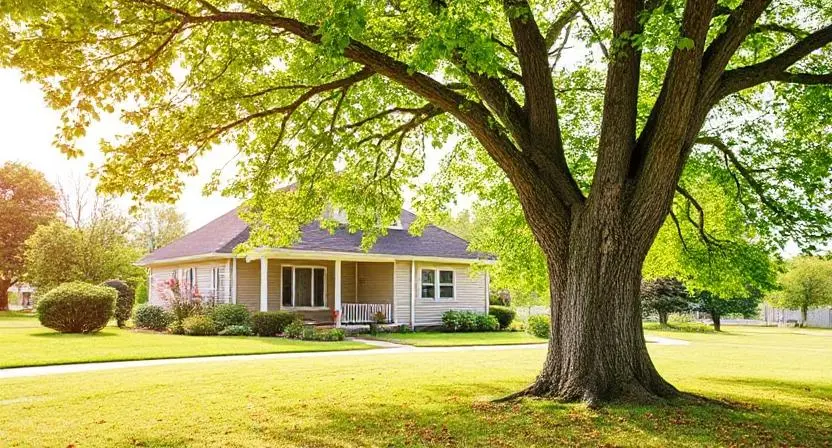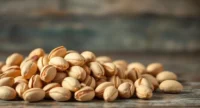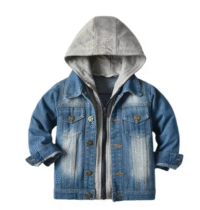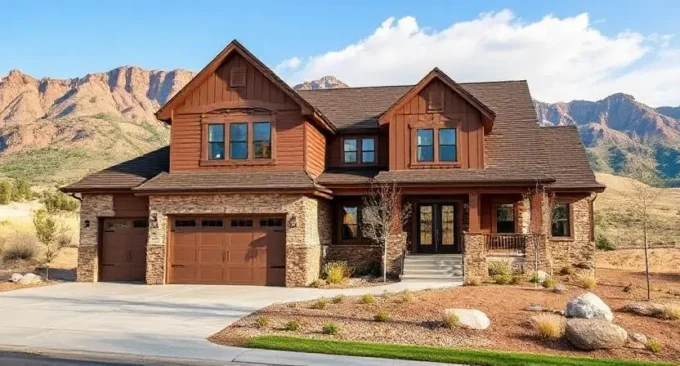Discover how to choose the perfect tree for your property, blending beauty, function, and sustainability for lasting landscape appeal. Read on to learn more.
Trees are more than just greenery—they’re living investments that enhance your property’s beauty, value, and livability. Whether you’re seeking shade, privacy, or a pop of seasonal color, choosing the right tree can transform your outdoor space for decades to come. But with so many options available, how do you select the one that perfectly complements your property? Let’s dig in—pun intended.
1. Start with Purpose
Before you rush to the nursery, think about why you want a tree in the first place. Are you looking to:
- Add shade for outdoor comfort?
- Enhance curb appeal with vibrant foliage or flowers?
- Provide privacy from neighbors?
- Create a habitat for birds and pollinators?
Knowing your primary goal will help narrow your choices. For example, a towering oak may provide ample shade, while a flowering dogwood adds charm and seasonal blooms.
2. Consider Your Climate and Soil
Not all trees thrive in all environments. Your local climate, hardiness zone, and soil type play a major role in a tree’s success. If you live in a hot, dry area, drought-tolerant species like mesquite or desert willow may be ideal. In wetter regions, maples or willows might flourish.
Pro tip: Have your soil tested before planting. This will reveal pH levels, nutrient content, and drainage quality, helping you pick a tree that won’t just survive—but thrive.
3. Size Matters (Now and Later)
A common mistake homeowners make is choosing a tree without considering its mature size. That cute little sapling could grow into a 60-foot giant that overshadows your home—or worse, its roots could threaten your foundation.
Always check:
- Mature height and width to ensure it fits your space.
- Root spread so it doesn’t interfere with sidewalks, driveways, or underground pipes.
- Canopy density for desired shade levels.
4. Maintenance and Mess Factor
Some trees are low-maintenance, requiring little more than occasional pruning. Others, while beautiful, can be messy with falling fruit, seed pods, or heavy leaf drop. If you’re not up for frequent cleanup, steer clear of trees like sweet gum (with spiky seed balls) or mulberries (with staining berries).
On the flip side, if you enjoy gardening and don’t mind a little upkeep, you might welcome a fruit-bearing tree that provides seasonal harvests.
5. Seasonal Interest
A truly standout tree offers beauty year-round. Consider species that change with the seasons:
- Spring: Flowering cherry, magnolia, or crabapple for vibrant blooms.
- Summer: Maples and elms for lush green foliage and shade.
- Fall: Red maple, sweetgum, or ginkgo for dazzling autumn color.
- Winter: Birch or evergreens for structure and greenery when everything else is bare.
This ensures your property looks appealing no matter the season.
6. Native vs. Exotic Trees
Native trees are often the easiest to grow since they’re adapted to your region’s climate and pests. They also support local wildlife and pollinators. Examples include white oak in the eastern U.S. or Douglas fir in the Pacific Northwest.
Exotic or ornamental trees, while potentially more eye-catching, may require more care and sometimes become invasive. Do a little research to avoid future headaches.
7. Think About Placement
Where you plant your tree is just as important as what you plant. Consider:
- Sunlight: Most trees need full sun, but some thrive in partial shade.
- Wind exposure: Protect delicate trees from strong prevailing winds.
- Proximity to structures: Keep enough distance from buildings and power lines to prevent damage as the tree matures.
- View framing: A well-placed tree can frame a beautiful view—or block an unwanted one.
8. Popular Choices for Different Goals
Here are some tried-and-true picks for various property needs:
- For Shade: Red maple, live oak, or London plane tree.
- For Privacy: Arborvitae, Leyland cypress, or eastern red cedar.
- For Flowers: Dogwood, magnolia, or Japanese cherry.
- For Fall Color: Sugar maple, sweetgum, or ginkgo.
- For Low Maintenance: Crape myrtle, serviceberry, or river birch.
9. Planting for the Future
Remember, a tree is a long-term investment. Choose one that not only meets your current needs but will still suit your property 10, 20, or even 50 years from now. It’s better to take the time to choose wisely than to regret removing a tree that outgrew its welcome.
When planting, give your tree the best start by:
- Digging a wide, shallow hole to allow roots to spread.
- Watering deeply and regularly during the first few years.
- Mulching to retain moisture and protect roots from extreme temperatures.
Final Thoughts
Choosing the ideal tree for your property goes beyond simple aesthetics—it’s about striking the right balance between beauty, functionality, and long-term sustainability. By keeping your goals, local climate, maintenance needs, and planting location in mind, you can select a tree that will not only elevate your property’s appeal but also stand as a lasting feature in your landscape for generations to come.
If you’re in Utah, visiting a trusted tree nursery in Salt Lake City can help you find the perfect match for your space and conditions. After all, the best time to plant a tree may have been 20 years ago, but the second-best time is today—so start planting and let your property flourish in beauty.














Leave a comment